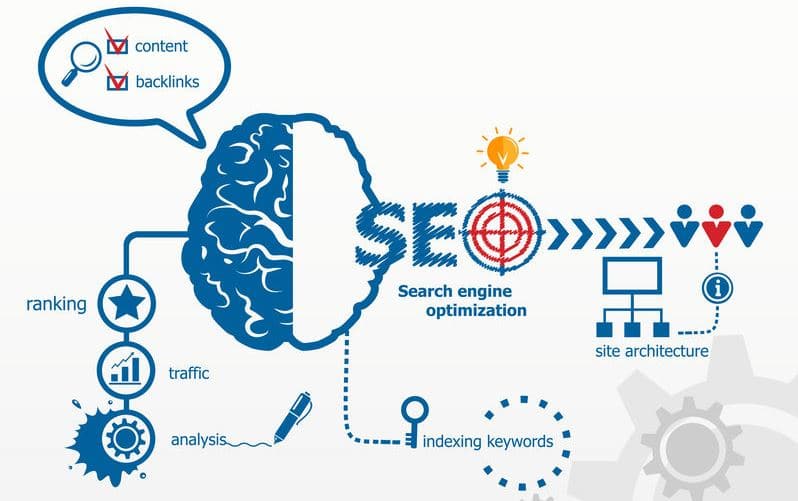Is your content accessible to all users? According to the U.S Census Bureau, 1 in 5 adults are considered to be disabled in one extent or another. That means part of your audience may need to use assistive technology to use the Internet.
If you haven’t considered accessibility best practices, then there are most likely barriers that make it harder for certain individuals to enjoy your content.
Implementing the following accessibility tips will not only help to broaden your audience, but they can also help with search engine optimization and conversion.
1. Readability & Structure
The Web Content Accessibility Guidelines (WCAG) outline the best practices for website accessibility. WCAG released the latest version (2.1) of their guidelines in 2018, with optimized approaches for all types of content from text to audio and video. One of its fundamental goals is the ease of comprehension of all web content.
While all marketers have this goal in mind when writing and sharing content, there are several steps that can make your content easier to read.
First, use shorter sentences and paragraphs wherever possible in your writing. Longer sentences and sections can be difficult to understand for those with learning or cognitive disabilities.
Second, organize and structure the content into sections with clear headlines and subheadlines. Using H2s and H3s to structure your content will also help assistive technologies and search engines crawl and interpret the content.
If you are publishing articles on your own site and you have a WordPress site, consider using an SEO plugin like Yoast SEO. Once installed, this plugin provides a readability score for every page or blog post and provides recommendations for improving the overall readability. You can follow the recommendations to improve the article for both accessibility and search engines.
2. Videos and Media
Today, video is a huge component of any content marketing strategy. Captions are the most critical accessibility best practice for video content whether it is a live or previously recorded video. Users who are hard of hearing or deaf depend on the captions in order to understand your video.
When you add captions to your video, you’ll typically see higher engagement rates in general because a lot of users will turn on the captions if they are in an environment where they need the volume to be negligible or muted.
Luckily, it’s easy to add captions to videos on most platforms. After uploading a video to YouTube, you can turn on the automatic captions feature and then clean up any of the caption text if the automatic text is incorrect. For social media platforms like Facebook and LinkedIn, you can upload a captions file along with the video when sharing content on these platforms. The only challenging platform for captions is Instagram, but there are numerous apps or video editing tools that allow you to add captions directly to a video.
In addition to video, offer a text version of any audio content such as podcasts or radio clips. Providing a written transcript of a podcast or video is also helpful for SEO since search engines are not able to crawl a video or audio file.
3. Images and Color Contrast
Images and design elements are a great way to enhance any piece of content and visually tell a story. However, you need to make sure all images and media content can be interpreted for those who have vision difficulties.
Start by adding alternative text for all images included in your articles and content. Image alt tags or alternative text is critical for accessibility because screen readers use the tags to inform a user of visual content. The alt tag should describe the image and convey the important meanings that a user would gain from the image.
It’s okay to put text directly on an image, but you need to make sure that the content also appears in a textual format or that the alt tag clearly states the text on the image. Otherwise, users who cannot view the visual content will be missing out on your meaning.
Next, make sure there is adequate contrast for all text or images of text in your content. A contrast ratio of 4.5:1 is the minimum standard set by the WCAG 2.1 for normal text or images of text. With approximately 10% of the world population color blind, contrast ratios are a critical best practice in any piece of content.
4. Forms & PDFs
Whether using a pop-up form, offering an e-book download, or including a newsletter signup, your marketing campaigns will most likely consist of a form, at some point. There are several accessibility best practices to follow for website forms, regardless of their purpose.
First of all, you should not use placeholder text for the form labels. You’ll often see a form design with placeholder text where the content or label for a form field is in the actual field (see image example). This is a poor practice for accessibility because once a user starts to fill out the form, the label for that field disappears. This can create a lot of challenges for users with a learning or cognitive disability. Instead, label each form field and make sure there are error messages set up to help guide the user along.
As part of a marketing funnel, you may offer a downloadable white paper or e-guide after they fill out a form. These documents are typically provided as a PDF file.
PDF files actually have their standards for accessibility, as well. Unfortunately, a lot of older PDFs, especially those with form fields, don’t follow the new standards. Adobe Acrobat is one of the best programs to convert a PDF into an accessible format.
5. Comments & Feedback
After you’ve tended to your content and functionality, the next step is to keep an eye out for bugs and tend to quality control issues. Just as mobile devices and tablets are changing, screen reader, assistive technology and website platforms are all changing, too, leaving a lot of room for a lot of little fixes, updates and upgrades.
One of the best ways to ensure that your content stays accessible is to allow users to share problems. There are a few ways that you can receive feedback from your users. If you have a comment feature on your blog or anywhere that you are posting content, keep an eye out for technical issues.
On your own website, consider adding an Accessibility Feedback form and putting a link to this form in the footer of your site. This simple form provides a way for users to report accessibility issues as they arise.
In addition to welcoming user feedback, you can use free online tools to monitor the accessibility of your site. The Google Chrome Lighthouse Audit tool allows you to scan any page of your website for free. The accessibility scores are based on the WCAG 2.1 standards and are accompanied by recommendations to improve your site’s accessibility.
[insert page=’how-to-create-a-content-marketing-plan-for-2020′ display=’single-related-article-02.php’]
Expand Your Audience
With any marketing campaign, the goal is to reach the farthest audience as possible with your content and work. Considering the best practices for accessibility will not only help you expand your audience, but it will also help you establish goodwill with users and readers of your content.






